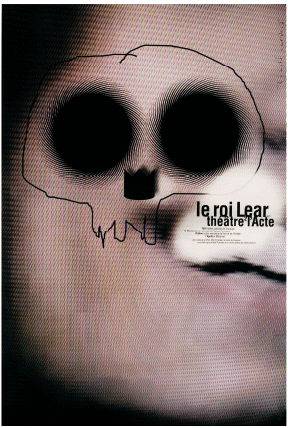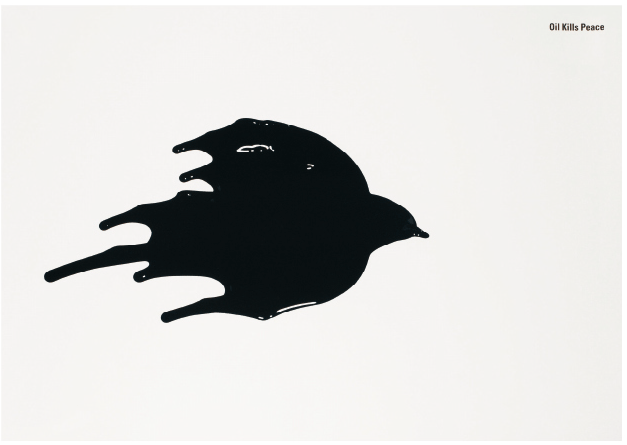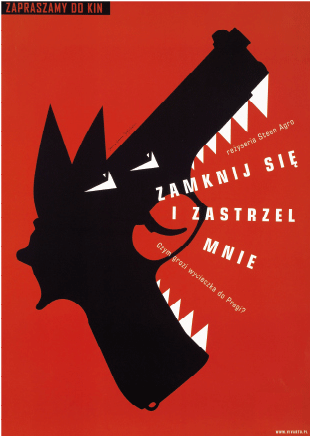
In June 2008, the Wilanow Poster Museum in the peaceful timber, the suburb of Warsaw, had celebrated its 40th anniversary. Meanwhile, the earliest poster museum in the world was welcoming the 21st opening ceremony of International Poster Biennale (IPB), Warsaw. IPB has been not only the classical design event since 1966, but also given the title of the earliest poster biennale in the world.
While facing the influence of television and internet today, is the existing space for posters, a traditional medium over 300 years, getting smaller and smaller? At a speedy pace of new communication, which indicates a shorter period of production than those before, does the compression of time reduce designer's time for conceiving? Due to spread of design education, the so-called designers are speedily increasing, and it also enhances the competition amongst design; does this phenomenon make the number of lowly qualified design increase? However, when we were facing the 672 posters in the 21st IPB, which were chosen in 3068 entries from 57 countries, the above-mentioned doubts seemed to be all gone by these attractive and different sizes of posters. There is no doubt that the elected works almost represent the greatest masterpiece of posters in the contemporary world, and the great works seem to erase all discontent with designers and the world. IPB, Poland, could be one of the last paradises for international designers, besides Lahti, Toyama, Chaumont, etc.
Over the 20 years, from 60s' to 80s', the golden age of Poland poster had been not only fashionable with its astonishing visual graphics and personalised handwritings, but also created a strong atmosphere of posters locally. Hence, the public of Poland still remains the habits of appreciating posters and the tradition of poster. All previous styles of IPB Warsaw are keeping the favour of astonishing visual graphics, and in fact, its style is a little bit different from Chaumont, which emphasizes no the printing techniques and text layout, instead of highlighting the visual elegance and delicate taste like Toyama.
The 21st president of the jurors committee is Uwe Loesch (Germany), which consisting of Xavier Bermudez (Mexico), Tomasz Bogus?awski (Poland), Anette Lenz (France), Marcin W?adyka (Poland), and Jianping He (Germany). The jurors did not having harsh judging criteria among each other; they began with the nominated works on their minds and stated why they chose them individually. In the process of electing, the jurors had created a mutual understanding, so that they are having the consistent concept of choosing the greatest works. As usual, most of the participants had take part in Category Culture (B), so the awards of Category Culture (B) are the most noticeable. The gold award is given to theatrical poster- King Lear by the French designer, Ronald Curchod. Ronald Curchod used to design the posters by illustration; yet, he not only remains his style of hand-painted drawing, but also links up the technique of silk screen printing which combines with computer grids and overprint. The brand-new combination personalises his design and makes his work unique. In addition, the size of the French posters 120x176cm) also make it relatively dominant in this limited room of the poster museum. As a result, this work is consistently recommended as the gold award. Moreover, in the group of ideological Posters, ?"Oil kills Peace" by Mark Gowing from Australia is the other work praised in unanimity. His poster conveys a concise style, the signal colour on the white background, with the commonly understandable graphs, make it relatively distinguish in the ideological category.
Besides, the winner of the Jozef Mroszxzak Honorary Award granted by the Rector of the Academy of Fine Arts in Warsaw is the young design group in Warsaw- Joanna Gorska and Jerzy Skakun. Personally, I think it can represent the new generation of Warsaw's design. Actually, in the trend of globalization, it is commendable that they do not give up the feature of handiwork and the nutrition of Warsaw poster tradition, and what is more, they do not abandon the expression with new technology. I would say that their work is full of enthusiasm, diversification, and personalisation, and not garrulous. Undoubtedly, this is the new direction of Warsaw posters.
Jianping He
June 2008
photo by Jianping He

THE GOLD MEDAL:
author: Ronald Curchod , France
title: King Lear
(C)IPB Warsaw 2008

THE GOLD MEDAL:
author: Mark Gowing , Australia
title: Oil Kills Peace
(C)IPB Warsaw 2008

author: Joanna Gorska i Jerzy Skakun, Poland
title: Shut up and Shoot me
(C)IPB Warsaw 2008
